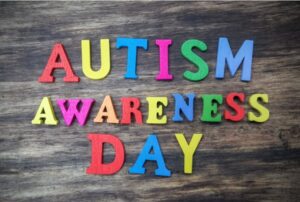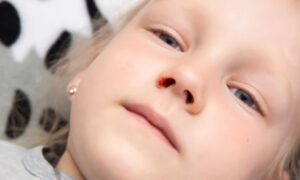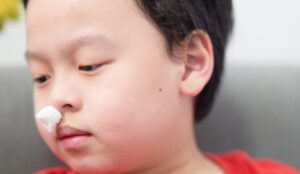Parents often notice white patches on their child's skin that may not cause pain or itching but can be confusing. These white spots can appear in various forms, with the most common being Pityriasis Alba and Leukoderma (white spots). Though they may look similar, these two conditions differ in causes, symptoms, and treatments. Understanding these differences is crucial for providing the right care for your child.
Pityriasis Alba is a common skin condition that typically affects children and adolescents. It is characterized by irregular pale white patches with mild scaling, often seen on the face, arms, and torso. These patches are non-itchy and painless but may become more noticeable during the summer months due to sun exposure, as the affected areas do not tan as effectively as the surrounding skin.
Causes of Pityriasis Alba:
The exact cause of Pityriasis Alba remains unclear. However, it is often linked to dry skin, mild eczema, and environmental factors like sun exposure. Pityriasis Alba is non-contagious and typically resolves on its own over time without requiring special treatment.
Symptoms of Pityriasis Alba:
- Irregular pale or light-colored patches
- Mild scaling or flaking of the skin
- Painless and non-itchy areas
- Most commonly found on the face, upper arms, and torso
Treatment for Pityriasis Alba:
Though Pityriasis Alba generally resolves on its own, here are some steps parents can take to help care for their child’s skin:
- Moisturize the affected areas regularly with gentle creams or lotions to prevent dryness.
- Avoid excessive bathing in hot water, as it can worsen skin dryness.
- Sun protection is crucial. Applying sunscreen will help reduce the contrast between affected and unaffected skin areas.
What Are White Spots (Leukoderma) and How Do They Differ from Pityriasis Alba?
White spots, or Leukoderma, refer to areas of skin where pigmentation has been lost. The most common form of Leukoderma is Vitiligo, a chronic skin condition in which the pigment-producing cells (melanocytes) are destroyed, leading to depigmented patches.
Causes of White Spots (Vitiligo):
While the exact cause of Vitiligo is not fully understood, it is believed to be related to autoimmune responses, genetic factors, or environmental triggers. Unlike Pityriasis Alba, Vitiligo can progress over time, and white spots may gradually enlarge or spread to other parts of the body.
Symptoms of White Spots (Vitiligo):
- Well-defined white patches on the skin
- No scaling (unlike Pityriasis Alba)
- Painless and non-itchy areas
- Often appears on exposed areas such as the face, hands, feet, and knees
Treatment for White Spots (Vitiligo):
Treatment for Vitiligo usually requires medical intervention, which may include:
- Topical treatments such as corticosteroids to restore skin color.
- Light therapy (narrowband UVB) to stimulate the production of melanin.
- Psychological support, especially for children, as Vitiligo can impact self-esteem.
Key Differences Between Pityriasis Alba and White Spots (Vitiligo)
Here’s a comparison to help you differentiate between Pityriasis Alba and Vitiligo (white spots):
| Feature | Pityriasis Alba | White Spots (Vitiligo) |
|---|---|---|
| Appearance | Irregular pale patches with mild scaling | Well-defined white patches without scaling |
| Age Group | Common in children aged 3-16 | Can affect any age group, often starts in adolescence |
| Affected Areas | Primarily face, upper arms, and torso | Any body part, especially exposed areas |
| Symptoms | Mild scaling, painless, non-itchy | Depigmented patches, painless, non-itchy |
| Cause | Possibly related to dry skin or mild eczema | Likely related to autoimmune or genetic factors |
| Treatment | Generally self-resolving, no specific treatment needed | Requires professional treatment, may include medications or light therapy |
| Contagious | Non-contagious | Non-contagious |
How to Care for Pityriasis Alba and White Spots in Children?
Both conditions require different approaches for management:
Caring for Pityriasis Alba:
- Moisturize the skin regularly to keep it hydrated, especially in colder months.
- Sun protection is key. Apply sunscreen to prevent further damage and reduce the contrast between patches and healthy skin.
- Limit hot water exposure to avoid exacerbating dry skin.
Caring for White Spots (Vitiligo):
- Consult a dermatologist for an accurate diagnosis and personalized treatment plan.
- Treatment may include topical medications like corticosteroids to restore pigmentation or light therapy for more severe cases.
- Provide emotional support as Vitiligo may impact your child’s self-esteem.
When to Consult a Dermatologist?
If your child shows signs of white spots or Pityriasis Alba that don’t improve over time, it’s important to consult a dermatologist. They will provide an accurate diagnosis and recommend appropriate treatment options.
Takeaways: Pityriasis Alba vs. White Spots
While both Pityriasis Alba and white spots (Vitiligo) are common skin conditions in children, they have distinct causes, symptoms, and treatments. Pityriasis Alba is usually a self-limiting condition that resolves with minimal intervention, while Vitiligo requires professional medical treatment. If you’re unsure about your child’s skin condition, a visit to the dermatologist is always recommended.
By understanding these skin conditions, parents can provide the appropriate care and support for their child's skin health.
FAQ
1、Can Pityriasis Alba turn into Vitiligo?
No, Pityriasis Alba does not turn into Vitiligo. They are distinct conditions with different causes. Pityriasis Alba is linked to dry skin or mild eczema, while Vitiligo is often associated with autoimmune or genetic factors.
2、Are white patches on my child’s skin always Vitiligo?
No, not all white patches are Vitiligo. They can also be caused by conditions like Pityriasis Alba, fungal infections, or other dermatological issues. A dermatologist can provide an accurate diagnosis.
3、Is Pityriasis Alba contagious?
No, Pityriasis Alba is not contagious. It cannot be spread from one child to another through physical contact or shared items.
4、How long does Pityriasis Alba take to resolve?
Pityriasis Alba typically resolves on its own within a few months to a year. Regular moisturization and sun protection can help improve the skin’s appearance.
5、Can sunscreen prevent white spots on my child’s skin?
While sunscreen cannot prevent conditions like Vitiligo or Pityriasis Alba, it can reduce the contrast between affected and unaffected skin in Pityriasis Alba and protect against sun damage.
References
- American Academy of Dermatology. Vitiligo Overview.
- Mayo Clinic. Vitiligo - Symptoms and Causes.
- KidsHealth by Nemours. Pityriasis Alba. .
- National Eczema Association. Understanding Eczema in Children.
- DermNet NZ. Pityriasis Alba.
- Cleveland Clinic. Vitiligo Causes and Treatments.








